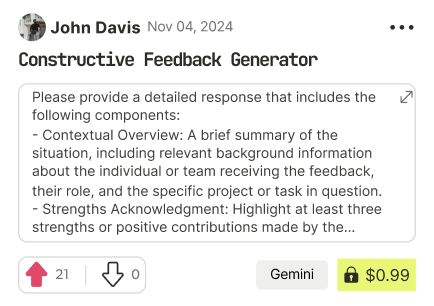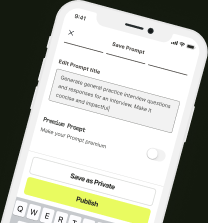Career Advancement Strategy for a Top Performer
CAREER CHESS ANALYSIS:
You are a classic example of a high-performing professional trapped by the 'visibility paradox'. Your technical excellence is undeniable, but in the modern workplace, being exceptionally good at your job is table stakes, not a differentiator for promotion. You are perceived as a reliable executor, but not yet a strategic leader. Your reluctance to self-promote, while admirable ethically, has inadvertently made you invisible to decision-makers who prioritize perceived impact over quiet competence. Your network, concentrated among peers, lacks the advocacy power needed to champion you upwards. The key challenge now is to strategically re-engineer your visibility in a way that is authentic to your introverted nature and aligned with your values, moving from being seen as a 'fixer' to a future VP.
STRATEGIC RECOMMENDATIONS:
1. VISIBILITY ENGINEERING: The 'Strategic Echo' Technique
Psychological Principle: Mere-Exposure Effect & Subliminal Influence. Repeated, subtle positive exposure to your name and contributions, even indirectly, increases familiarity and positive perception among decision-makers without overt self-promotion.
Tactic: Instead of directly boasting, strategically 'echo' your achievements through others. After a successful project or delivering impactful analysis, proactively share key insights with your boss and select influential peers before major meetings. Equip them with data points or key takeaways that naturally highlight your work during discussions. They then become your unintentional 'echoes,' organically mentioning your contributions.
Potential Pitfalls: Choosing the wrong 'echoes' (non-influential peers), information not being relayed effectively, appearing manipulative if too obvious.
Example: Before a quarterly performance review meeting, you brief your boss on a risk model you refined that significantly reduced portfolio volatility. During the meeting, your boss mentions, "We've seen a notable improvement in risk management this quarter thanks to refinements in our modeling approach," without explicitly naming you, yet subtly linking your work to positive outcomes.
2. RELATIONSHIP ARCHITECTURE: The 'Reverse Mentorship' Approach
Psychological Principle: Reciprocity & Value-Based Networking. Building relationships based on mutual benefit and offering value to senior leaders, rather than just seeking mentorship, creates stronger, more authentic connections.
Tactic: Instead of directly asking for mentorship (which can seem demanding), offer 'reverse mentorship' to a senior leader outside your direct reporting line. Identify a leader known for strategic thinking or in an area you understand well analytically (e.g., emerging market risks). Offer to provide them with concise, data-driven insights or briefings on trends relevant to their role, leveraging your analytical skills.
Potential Pitfalls: Appearing presumptuous if not approached humbly, offering insights that are irrelevant or poorly researched, becoming solely transactional.
Example: You approach the Head of Strategy, mentioning you follow emerging market trends closely in your risk modeling. You offer to provide a bi-weekly brief on key risk indicators in emerging markets, helping them stay ahead of potential strategic challenges. This positions you as a valuable resource and builds a relationship based on your expertise.
3. PSYCHOLOGICAL MASTERY: The 'Question-Based Influence' in Meetings
Psychological Principle: Authority of Expertise & Socratic Method. Demonstrating expertise through insightful questions, rather than declarative statements, can be more persuasive and less confrontational, aligning with an introverted style. It positions you as a thinker, not just a doer.
Tactic: In meetings, shift from presenting answers to asking strategic questions that subtly showcase your analytical depth and foresight. Frame questions that highlight potential risks, opportunities, or deeper implications related to your area of expertise. This guides the conversation strategically and demonstrates your insightful thinking without direct self-promotion.
Potential Pitfalls: Questions being perceived as critical or undermining, asking too many questions without offering solutions, questions being too technical or irrelevant to the broader discussion.
Example: In a project planning meeting discussing market expansion, instead of stating "Our risk model shows high volatility in that market," you ask, "Considering the sensitivity our risk models are showing to macroeconomic factors in the target market, how are we factoring potential volatility into our market entry strategy and contingency plans?" This subtly highlights your risk expertise and prompts strategic thinking.
4. STRATEGIC ADVANCEMENT: The 'Project Portfolio Pivot'
Psychological Principle: Perception of Strategic Contribution. Working on projects that are visibly aligned with strategic organizational goals elevates your perceived importance and contribution beyond functional expertise.
Tactic: Actively seek out or volunteer for projects that are high-visibility and strategically important to the organization (e.g., new market entry, regulatory compliance, digital transformation). Frame your analytical contributions within these projects in terms of their direct impact on achieving strategic objectives. This moves you from being seen as a risk modeler to a strategic risk advisor.
Potential Pitfalls: Overstretching your capacity, taking on projects outside your core skills leading to failure, neglecting core responsibilities while pursuing high-profile projects.
Example: When the company announces a new initiative to expand into sustainable finance, you proactively propose to lead the risk assessment framework for sustainable investment portfolios. This aligns your risk modeling skills with a high-priority, strategically important initiative, making your contribution more visible and valued.
5. SELF-ADVOCACY: The 'Data-Driven Value Narrative'
Psychological Principle: Anchoring & Justification. When advocating for yourself (promotion, compensation), using data and quantifiable achievements to demonstrate your value creates a stronger, more objective case that is harder to dismiss.
Tactic: Prepare a concise 'value narrative' backed by data quantifying your impact over the past year (e.g., "Risk models improved portfolio resilience by X%, saving the company estimated Y in potential losses"). Use this data-driven narrative during performance reviews or promotion discussions. Focus on the business impact of your analytical work, not just the technical details.
Potential Pitfalls: Overloading with too much data, focusing on activity metrics rather than impact metrics, sounding boastful or exaggerating impact.
Example: When discussing VP promotion, you present a one-page summary highlighting 3-4 key achievements with quantifiable impact: "Risk model enhancements led to a 15% reduction in portfolio volatility, directly contributing to improved risk metrics and investor confidence. Mentoring program improved junior analyst productivity by estimated 10%, enhancing team output and reducing onboarding time." This shifts the conversation from subjective opinions to objective value.
ACTION PLAN:
Week 1-2: Identify 2-3 influential peers and your boss for 'Strategic Echo' technique. Draft template for 'Data-Driven Value Narrative'. Identify a senior leader for 'Reverse Mentorship' and prepare initial value proposition.
Week 3-4: Initiate 'Reverse Mentorship' outreach. Implement 'Strategic Echo' tactic in upcoming meetings. Refine 'Data-Driven Value Narrative' with quantifiable achievements.
Month 2-3: Actively practice 'Question-Based Influence' in meetings. Explore opportunities to pivot towards strategically important projects ('Project Portfolio Pivot'). Schedule check-in with boss to subtly gauge perception of increased visibility.
Month 4-6: Formalize 'Data-Driven Value Narrative' for performance review/promotion discussions. Evaluate effectiveness of strategies and adjust as needed. Seek feedback from 'Reverse Mentor' for blind spots and further advancement strategies.
PSYCHOLOGICAL INSIGHT:
The 'Curse of Competence': Being exceptionally good at your core job can paradoxically hinder your advancement. Organizations often promote based on perceived leadership potential and strategic visibility, not just technical proficiency. You must proactively signal your leadership capabilities and strategic impact beyond your day-to-day tasks to break free from this curse and be recognized for the VP potential you possess.
POWER QUESTION:
If your career advancement were a chess game, and visibility and relationships were your key pieces, what strategic moves can you make now to position them for maximum impact on the board, while staying true to your authentic style of play?

Career Chessmaster: Workplace Psychology Cheat Code
- gemini
- Try Prompt

Find Powerful AI Prompts
Discover, create, and customize prompts with different models, from ChatGPT to Gemini in seconds

Simple Yet Powerful
Start with an idea and use expert prompts to bring your vision to life!